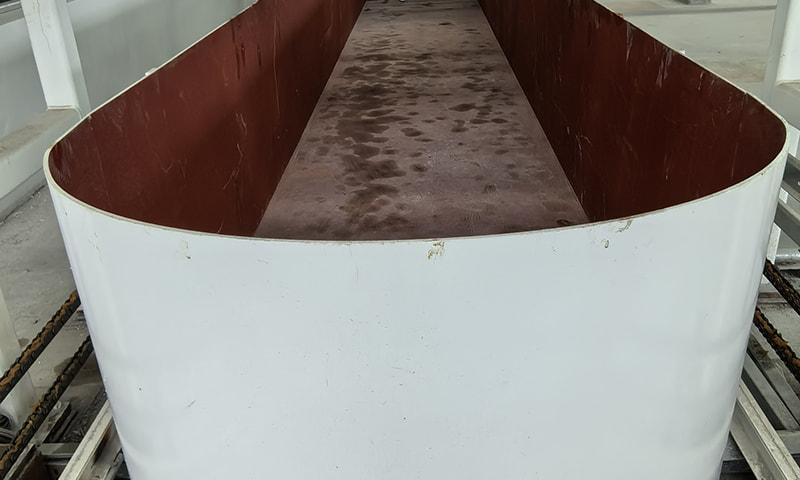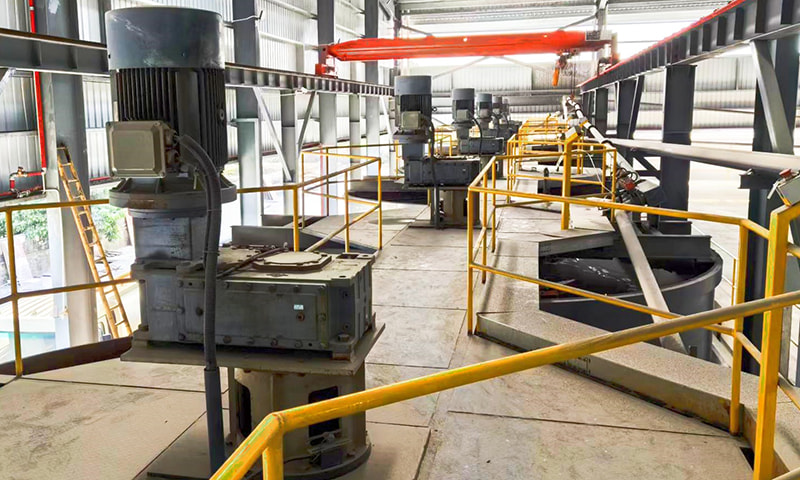Pull&Insert Bar Section, as a key automation device, is becoming an indispensable part of many industry production lines. The equipment focuses on the precise insertion, pulling and transportation of strip materials, and is widely used in metal processing, automobile manufacturing, chemical processing and other fields. Its core functions not only improve production efficiency and reduce human intervention, but also play an important role in improving production safety and reducing equipment maintenance costs.
The original design of the Pull&Insert Bar Section equipment is to simplify the bar material processing process in the production process. Whether it is cleaning, lifting, soaking or other treatment methods, this equipment can be efficiently completed, ensuring that the product is in the best condition when it enters subsequent autoclaves or other treatments. Compared with traditional manual processing methods, automation equipment provides higher accuracy and consistency, reducing human errors and uncertainties in production.
A significant advantage is its high-strength structural design, allowing the device to maintain stable performance in environments of high load and high frequency operation. In many industrial production processes, material handling demand is very high, especially in metal processing or heavy material processing, equipment must bear high loads. Traditional equipment often fails to meet this demand, however, Pull&Insert Bar Section is particularly prominent in these high-load environments with its strong construction and efficient working ability. By adopting high-strength materials and precision processes, the equipment not only extends its service life, but also ensures the stable operation of the production line.
In addition, another highlight of the Pull&Insert Bar Section device is its automated or semi-automated operational capabilities. On many traditional production lines, the processing of strip materials often relies on manual operations, and operators need to manually insert, pull or carry materials, which not only takes a lot of time, but also easily affects production quality due to improper operation. Through intelligent control systems, automation equipment can efficiently and accurately complete the insertion and pulling of materials, reducing the interference of human factors on the production process. Especially in the rapidly growing market demand and high-precision production process, this function greatly improves production efficiency and ensures consistency in product quality.
Reducing manual intervention and improving efficiency is an important function of the Pull&Insert Bar Section equipment. Modern industrial production lines are increasingly relying on automation and intelligent equipment to reduce manual intervention and improve production efficiency. By reducing the dependence on manual operations, the equipment not only reduces the possibility of operational errors, but also reduces the labor intensity of workers, allowing them to focus their energy on higher-level tasks. At the same time, the intelligent design of the equipment makes its operation easier, and the staff on the production line can ensure the efficient operation of the equipment without frequent intervention. The introduction of this technology has enabled many companies to reduce labor costs while improving production efficiency.
From a cost-effective perspective, the introduction of Pull&Insert Bar Section equipment significantly reduces maintenance costs during production. Traditional equipment often requires frequent manual maintenance and adjustment, and the maintenance process is prone to production interruptions due to operational errors. In contrast, through the built-in self-diagnosis and fault detection functions, automation equipment can monitor the operating status of the equipment in real time, detect potential problems in a timely manner and repair them, thereby reducing equipment downtime and human intervention. More importantly, this efficient maintenance and management model reduces long-term operation costs and ensures long-term and stable operation of the production line.
Safety is an important consideration in the design of any industrial equipment, especially in high-strength, high-load production environments. The Pull&Insert Bar Section equipment has also been fully considered in this regard. Through intelligent safety protection systems, such as overload protection, automatic shutdown mechanism and emergency alarm functions, the equipment can respond quickly in the event of a failure to ensure the safety of the operator. This intelligent safety design not only improves the reliability of the equipment, but also strengthens the safety of the production line.
With the widespread application of Pull&Insert Bar Section equipment, industrial automation technology is increasingly developing towards more efficient and accurate directions. Whether in the fields of metal processing, electronic manufacturing, food processing, etc., the processing and transportation of strip materials are crucial. By optimizing these links, the production line can operate smoothly and efficiently, helping enterprises improve product quality and shorten production cycles, thereby better meeting market demand.
In the future, with the continuous advancement of technology, Pull&Insert Bar Section equipment will be further intelligent and automated, providing more competitive production solutions for more industries. With the deepening development of intelligent manufacturing, more companies will rely on such efficient equipment to optimize production processes and improve quality management, which will accelerate the global industrialization process.
Pull&Insert Bar Section equipment not only improves production efficiency and product quality, but also plays an important role in reducing costs and improving safety. With the continuous changes in market demand and the continuous upgrading of industrial production, this equipment will show its important value in more fields in the future, helping enterprises improve their competitiveness, and leading the industry development trend.







